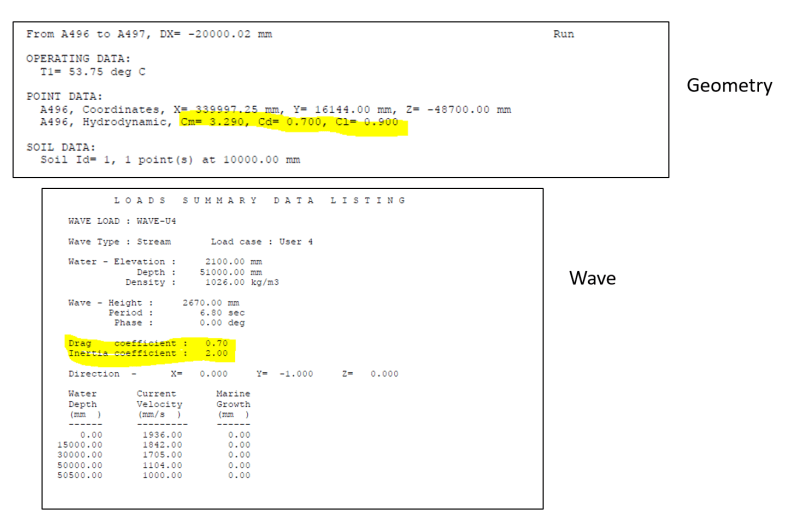I have been tasked with reviewing a subcon's autopipe results related to a subsea pipe line
I have never used autopipe
While reviewing the input files, I found some confusing inputs and cannot get a straight answer.
Hoping someone here can clarify
Each node in the input file seems to have a drag, lift and inertia coefficient assigned. This is expected since these properties are necessary for assessing pipe in flowing water.
However, there is another drag and inertia coefficient associated with the wave load. (see included excerpt)
In my experience these coefficient are properties of the structure's geometry for a given Reynold's number, not a properties of the wave itself.
So why is there a drag coefficient listed for wave and another on the nodes?
What does autopipe do with these? Are they multiplied together before applying to Morsion's equations or are they added together, is one ignored....where in the Autopipe documentation does it discuss the interaction between these two drag coefficients (one in wave and one on geometry)?

I have never used autopipe
While reviewing the input files, I found some confusing inputs and cannot get a straight answer.
Hoping someone here can clarify
Each node in the input file seems to have a drag, lift and inertia coefficient assigned. This is expected since these properties are necessary for assessing pipe in flowing water.
However, there is another drag and inertia coefficient associated with the wave load. (see included excerpt)
In my experience these coefficient are properties of the structure's geometry for a given Reynold's number, not a properties of the wave itself.
So why is there a drag coefficient listed for wave and another on the nodes?
What does autopipe do with these? Are they multiplied together before applying to Morsion's equations or are they added together, is one ignored....where in the Autopipe documentation does it discuss the interaction between these two drag coefficients (one in wave and one on geometry)?

